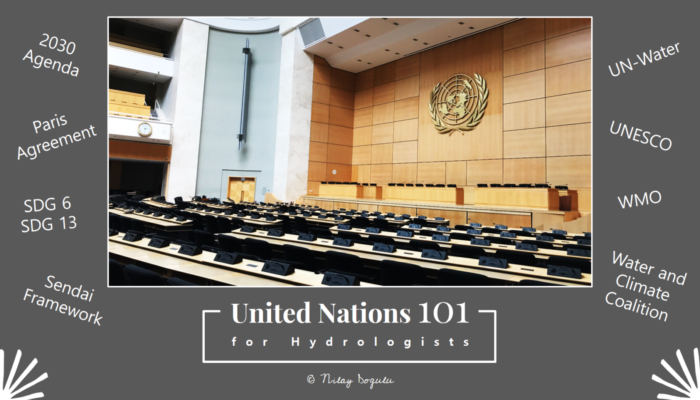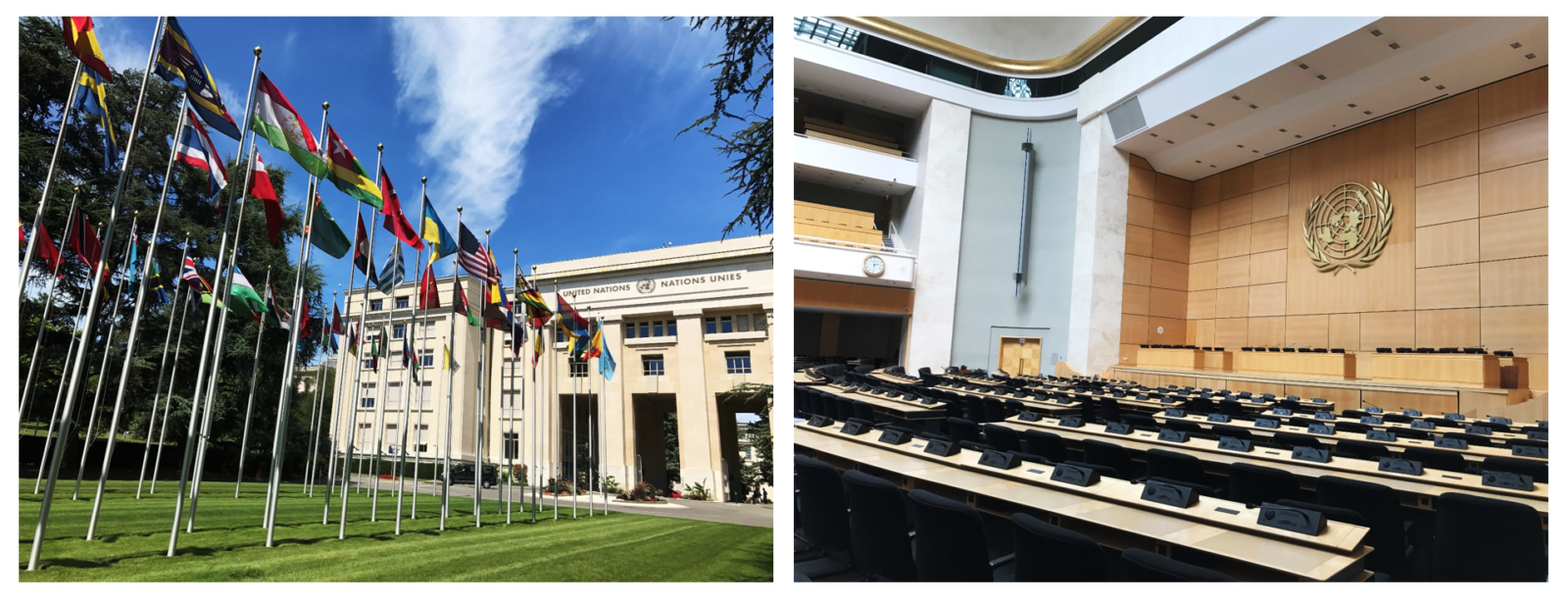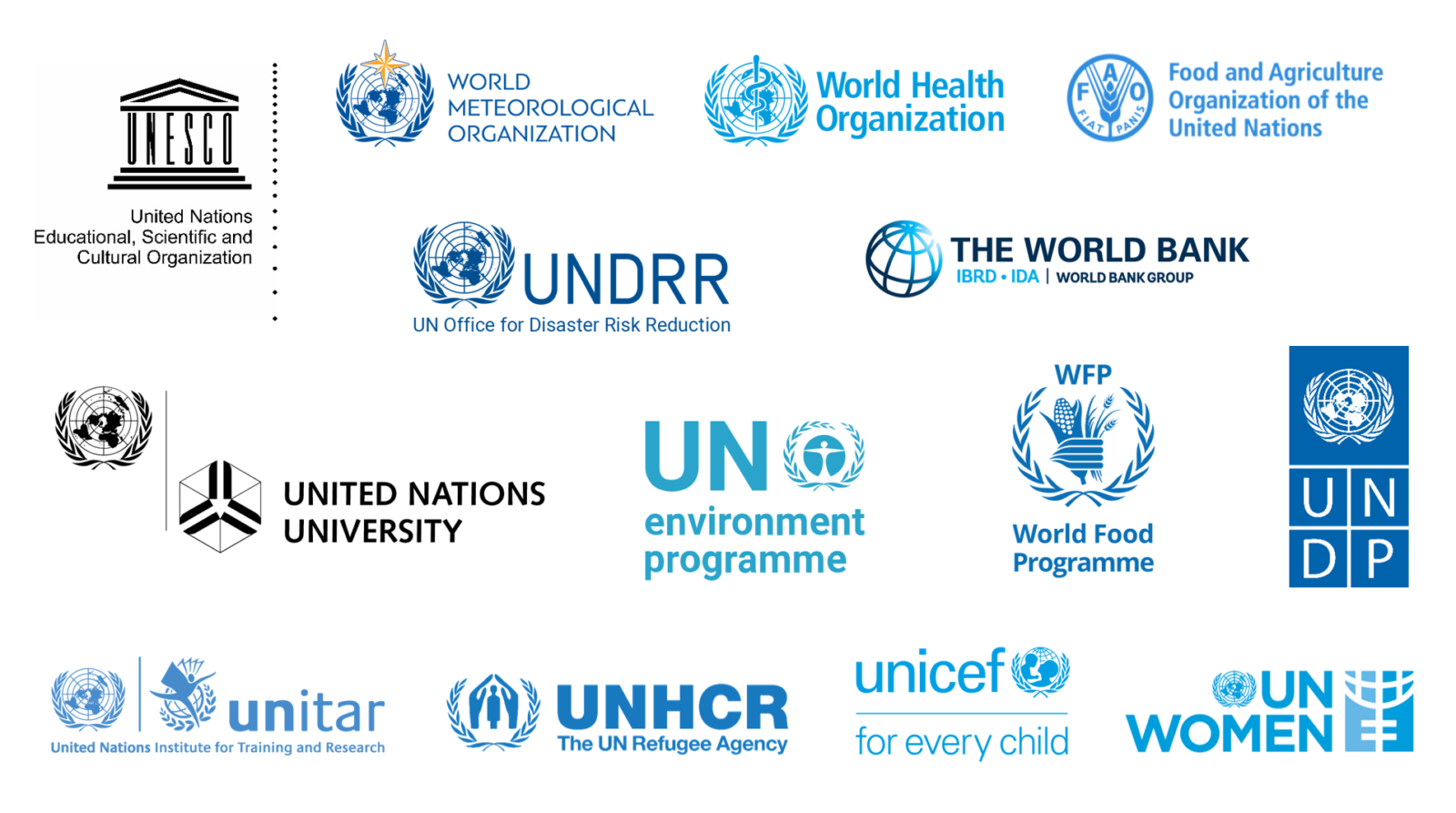
Did you feel the roar of water during the 2021 United Nations (UN) Climate Change Conference (aka COP 26) hosted at the Scottish Lowlands? It was the first time that the venue had a Water Pavilion in the COP history since 1995. The hashtags #Water4Climate with #COP26 were extremely popular in the social media channels. With the elevated status of water for climate adaptation, hydrological sciences will surely get more limelight in the coming years.
The integration of water and climate agendas for sustainable development is primarily driven by the UN. But what are the UN water-related agencies, programs and activities? How can hydrologists get (more) involved with them?
The UN and I
My early childhood memories of the UN go back to early 1990s. I vaguely remember the TV news bulletins featuring then-12-year-old, now 42, Canadian environmental activist Severn Cullis-Suzuki’s talk in 1992 at the UN Conference on Environment and Development (UNCED, aka the Rio de Janeiro Earth Summit). The UN logo was visible at the background and just on top of her head (watch the full 8-min talk here).
I also remember the boxed UNICEF cards that my dad gave us, which we didn’t want to send or share since they were so beautiful. Finally, there was the UNESCO world heritage sites. My home, the Anatolian land, aka Turkey since 1923, hosts some of these sites, many of which we visited in my childhood— Hierapolis-Pamukkale, the archaeological site of Troy, the ancient city of Ephesus, and the Neolithic site of Çatalhöyük, just to name a few. Added recently to the list is the pre-pottery Neolithic site of the world’s oldest known megaliths, Gobekli Tepe.
Today, as a hydrologist, I see the UN from another angle. Professionally, the first time I heard about UN’s water-related agencies, programs and activities was in 2011 during my internship at the Section of International Hydrological Relations, General Directorate of State Hydraulic Works, in Turkey. In preparation for the 2nd Istanbul International Water Forum, my supervisor arranged a special phone call with a UN-Water officer to discuss some developments. One of my other tasks was to assist with the national annual activity report for the UNESCO Intergovernmental Hydrological Programme (IHP). This is how I was introduced to the World Meteorological Organization (WMO) Commission for Hydrology–CHy, which was transformed into Hydrological Coordination Panel–HCP in 2019.
Later in my mid-20s, I studied at IHE Delft Institute for Water Education (formerly known as UNESCO-IHE) for a joint Erasmus Mundus master’s degree in Flood Risk Management (FLOODRisk Master). During summer 2017, I celebrated my 30th birthday at WMO in Geneva, where I was working as a short-term consultant on operational flood forecasting.
Thanks to all these professional experiences I realized how broad and influential the UN actually is, with its family of agencies and programs working towards water resilient societies.

The UN headquarters are located in New York City, with four main offices in Geneva, Nairobi, Vienna, and The Hague. In the photos, the UN office in Geneva, Switzerland (Credit: Nilay Dogulu)
The UN and its global agenda
The UN is an intergovernmental organization aiming to, among others, be “a centre for harmonizing the actions of nations” (Wikipedia). It was established in 1945, after the World War II, and, today, is joined by 193 member states. If you look at its logo and flag, you will see “a map of the world representing an azimuthal equidistant projection centred on the North Pole, inscribed in a wreath consisting of crossed conventionalized branches of the olive tree, in gold on a field of smoke-blue with all water areas in white“.
Being the world’s largest international organization, UN has a principle role in shaping the global agenda on climate change (Paris Agreement), sustainable development (2030 Agenda and its SDGs), and disaster risk reduction (Sendai Framework). The Conference of the Parties (COP) to the UN Framework Convention on Climate Change (UNFCCC) is one of the annual highlight events covered extensively in the national and international media. The next one, COP 27, will be held in the Egyptian city Sharm El-Sheikh on the Red Sea coast in November 2022.
The Intergovernmental Panel on Climate Change (IPCC) is also very popular. It is the UN body that provides policymakers with state of knowledge on climate change through its reports assessing the science related to climate change.
The UN system is a family with many branches of interest to Earth System scientists
The UN system consists of 6 principal organs, 17 specialized agencies and various funds and programs as well as research and training institutes— each having their own governing bodies, budgets and secretariats. The chances are you’ve seen or heard about them on several different occasions over your life time. A chart showing the UN system as a whole can be seen here. The UN General Assembly is the main policymaking organ of the UN providing a multilateral discussion platform on international issues. Its latest annual meeting, the seventy-sixth session of the UN General Assembly (UNGA 76), took place in New York City in September 2021. Out of all the resolutions adopted (250 in total), only 4% concerns climate, disaster risk reduction, humanitarian assistance or safe drinking water and sanitation.
The UN specialized agencies are those of more interest to hydrologists and, overall, researchers in the fields of Earth, planetary, and space sciences. They are independent international organizations and coordinate their work with the UN through negotiated agreements. Some familiar examples are the World Meteorological Organization (WMO), the Food and Agriculture Organization of the UN (FAO), the UN Educational, Scientific and Cultural Organization (UNESCO), the World Health Organization (WHO), and the World Bank Group (WB).
The well-known funds and programs such as the UN Environment Programme (UNEP), the UN Development Programme (UNDP), the World Food Programme (WFP), and the UN Children’s Fund (UNICEF) are the leading global actors in addressing the most stringent humanitarian and development concerns for planet Earth and its citizens. Additionally, there are many various other entities such as the UN Office for Disaster Risk Reduction (UNDRR), the Office of the UN High Commissioner for Refugees (UNHCR), and the UN Women.
The UN’s academic and research branch, the United Nations University (UNU), helps resolve these global issues through collaborative and policy-oriented research, education, and capacity development. UNU is headquartered in Tokyo and has several campuses across all continents. It encompasses 14 institutes (located in 12 countries) that offer postgraduate degrees and specialized training. Moreover, the UN Institute for Training and Research (UNITAR) is responsible for enhancing the effectiveness of the UN through diplomatic training, and for increasing the impact of national actions through public awareness-raising, education and training of public policy officials.

UN-Water
UN-Water is an interagency mechanism for coordinating water- and sanitation-focused efforts within the UN family. UN-Water’s flagship report on water and sanitation is the UN World Water Development Report (WWDR). It is a thematic report published annually by UNESCO and coordinated by UNESCO World Water Assessment Programme (WWAP). The 2020 edition of the report was themed “Water and Climate Change” and the 2021 edition “Valuing Water”. Also, UN-Water produces policy briefs that provide short and informative analyses on critical freshwater issues. For example, the theme of the 2019 policy brief was Climate Change and Water. It highlighted the need for an integrated approach to climate change and water management as well as for more investment in improved hydrological data, institutions and governance, education and capacity development, risk assessment, and knowledge sharing.
UN-Water also runs two global annual campaigns on “World Water Day” and “World Toilet Day”. In 2022, the campaigns’ theme is “Groundwater: Making the Invisible Visible”. In addition to specific days and weeks to mark particular events, it also designates specific decades to promote particular topics.
UN Decade on Water Action
The 2018-2028 decade was designated the International Decade for Action on Water for Sustainable Development (aka UN Water Action Decade). This decade aims to accelerate efforts towards achieving the globally agreed water-related goals. It extends the previous decade “Water for Life” (2005–2015) and supports the recently launched UN decades “Ecosystem Restoration” and “Ocean Science for Sustainable Development” (aka Ocean Decade) (2021–2030).
A special UN conference dedicated to comprehensively review progress on the Water Action Decade will be held in March 2023 at the UN headquarters in New York, co-hosted by Tajikistan and the Netherlands. This will be only the second UN Water Conference after the 1977 Conference in Argentina. It will gather different stakeholders to discuss the international water agenda, including the Sustainable Development Goals (SDGs) and targets contained in the 2030 Agenda for Sustainable Development.
SDG 6 “Clean Water and Sanitation”
SDG 6 is one of the 17 SDGs, and aims to ensure availability and sustainable management of water and sanitation for all. It brings together all the main aspects related to freshwater through eight targets: 6.1) safe drinking water, 6.2) adequate sanitation and hygiene, 6.3) water quality and wastewater, 6.4) water use and scarcity, 6.5) water resources management and 6.6) ecosystems, 6a) international cooperation and 6b) stakeholder participation. Together with SDG 11.5 on water-related disasters (under SDG 11 “Sustainable cities and communities”), these are the SDGs more pertinent to the hydrological cycle.
As part of the UN Water Action Decade, the SDG 6 Global Acceleration Framework was established to catalyse broader stakeholder action for supporting countries achieve SDG 6 faster and on greater scales.

The Water Cycle in the Sustainable Development Goals (Source: https://www.unwater.org/full-picture-holistic-water-goal/)
SDG 6 Data Portal
The SDG 6 Data Portal, launched in 2019 by the UN-Water’s Integrated Monitoring Initiative for SDG 6, serves as a global information hub for environmental, social and economic indicators to assess regional and national progress towards SDG 6. You might want to check it out for nice infographics and support material for teaching; it also offers tools for data visualization and analysis. For instance, did you know that:
- 58% of the world’s transboundary basin areas has an operational arrangement for water cooperation?
- 82% of monitored water bodies in Austria has good ambient water quality?
- 18% of the renewable water resources in Viet Nam is being withdrawn, after taking into account environmental flow requirements?
These and more numbers can be found in the SDG 6 Data Portal.
Water and Climate Coalition (WCC)
The Water and Climate Coalition is a recently established multi-stakeholder initiative as part of the SDG 6 Global Acceleration Framework. With its focus on data and information and capacity development, it aims to create the much needed synergistic momentum for integration of water and climate through tangible actions, activities and policy support. The Coalition welcomes research institutions and youth initiatives to join its members community, which consists of more than a dozen of like-minded organizations.
Finally, in addition to UN-Water, hydrology is also strongly present in the UNESCO and, increasingly, in the WMO. But these will be topics for my next posts.
Edited by Maria-Helena Ramos

Sara
Wow, that’s some news for hydrologists. Thanks for updating.